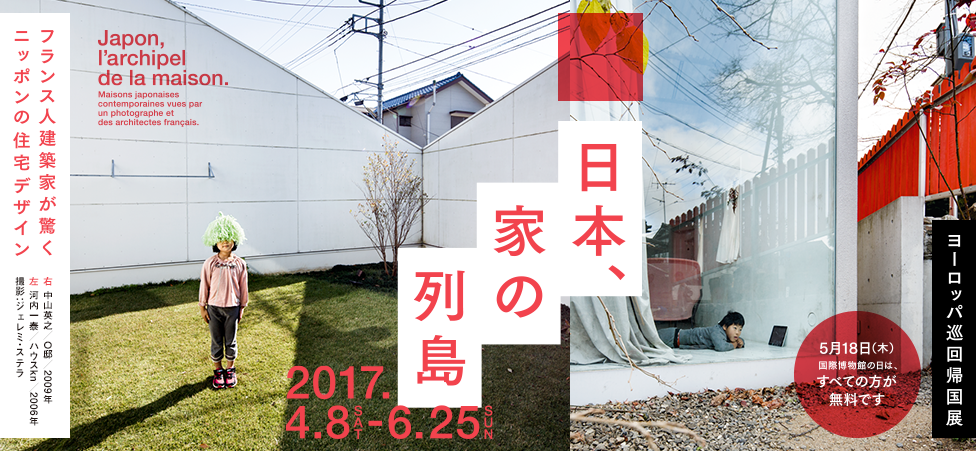Japan, Archipelago of Houses : The Designs That Took a French Architect By Surprise
General Information
- Dates
- 8 April - 25 June, 2017
- Hours
- 10 a.m. – 6 p.m. (Admittance until 5:30 p.m.)
- Closed
- Every Wednesday except on 3 May.
- Admission
- Adults: ¥ 800 Visitors aged 65 or over carrying proof of age: ¥700
Students (college): ¥600 Students (High / Middle school): ¥600
Admission is free for children in primary school and younger.
Groups of 20 or more are subject to a ¥100 discount per person.
Admission is free for disability passbook holders and up to one accompanying adult.
Free admission for all on 18 May, the International Museum Day
- Organizers
- Panasonic Shiodome Museum, The Asahi Shimbun
- Support
- Embassy of France in Tokyo / Institut français du Japon, The Japan Foundation, France Chamber of Commerce in Japan, Architectural Institution of Japan, The Japan Institute of Architects, Minato Ward Board of Education
- Commissioners
- Véronique Hours, Fabien Mauduit, Jérémie Souteyrat, Manuel Tardits
Exhibition overview
Following a successful tour that began in 2014 in France, Switzerland, Belgium, and the Netherlands, the“Japon, l’archipel de la maison” (Japan, Archipelago of the House) exhibition of modern Japanese residential architecture finally arrives in Japan. The exhibition is the brainchild of French photographer Jérémie Souteyrat and French architects Véronique Hours, Fabien Mauduit, and Manuel Tardits, who are all well versed in Japan and Japanese residential architecture—particularly Tardits, who has lived in Japan for thirty years and who co-founded the Yokohama-based architectural firm Mikan. Together, they offer a compelling evaluation of Japanese residential architecture that reflects their diverse views on the subject.
The evolution of residential architecture in Japan has been shaped by the country’s distinctive geographical features and natural environments, as well as its economy, industry, technologies, society, and cultures. The exhibition’s organizers have selected seventy houses—with a focus on works by currently active architects, both established and up-and-coming—that best exemplify this evolution. The resulting exhibit aims not only to present a straightforward history of how architectural styles have changed in Japan over time, but also to showcase the unique, innovative ways in which Japanese architects have incorporated Japanese housebuilding traditions and views of nature while also meeting the homeowners’ ideals.
The exhibition is divided into three sections: Yesterday’s Houses, Tokyo Houses and Today’s Houses. Each section features striking photographs and videos, as well as blueprints and interviews with architects and homeowners. In addition, models and sketches that were missing from the exhibit’s European leg of the tour will also be displayed. Together, the items present the four organizers’ novel take on what it means for something to be Japanese, what the essential qualities of the Japanese house are, and what traditions shape these architectural designs.
Drawings and live art by guest artist Kyohei Sakaguchi will also be featured as part of the exhibition. Known for radical works such as Zero Yen House and the Living in a Water Tank project, Sakaguchi explores new methods of living in and thinking about urban environments.
In an age when countries around the world are tackling the issue of how to create urban environments that are both functional and attractive, this exhibition should provide visitors with numerous ideas on how to achieve such a goal.






